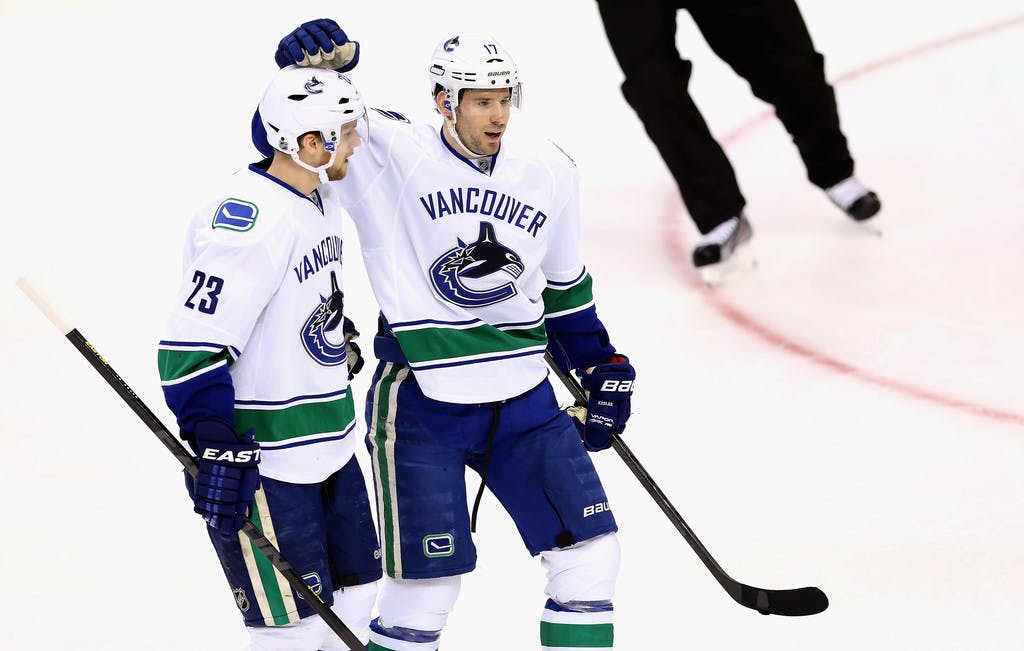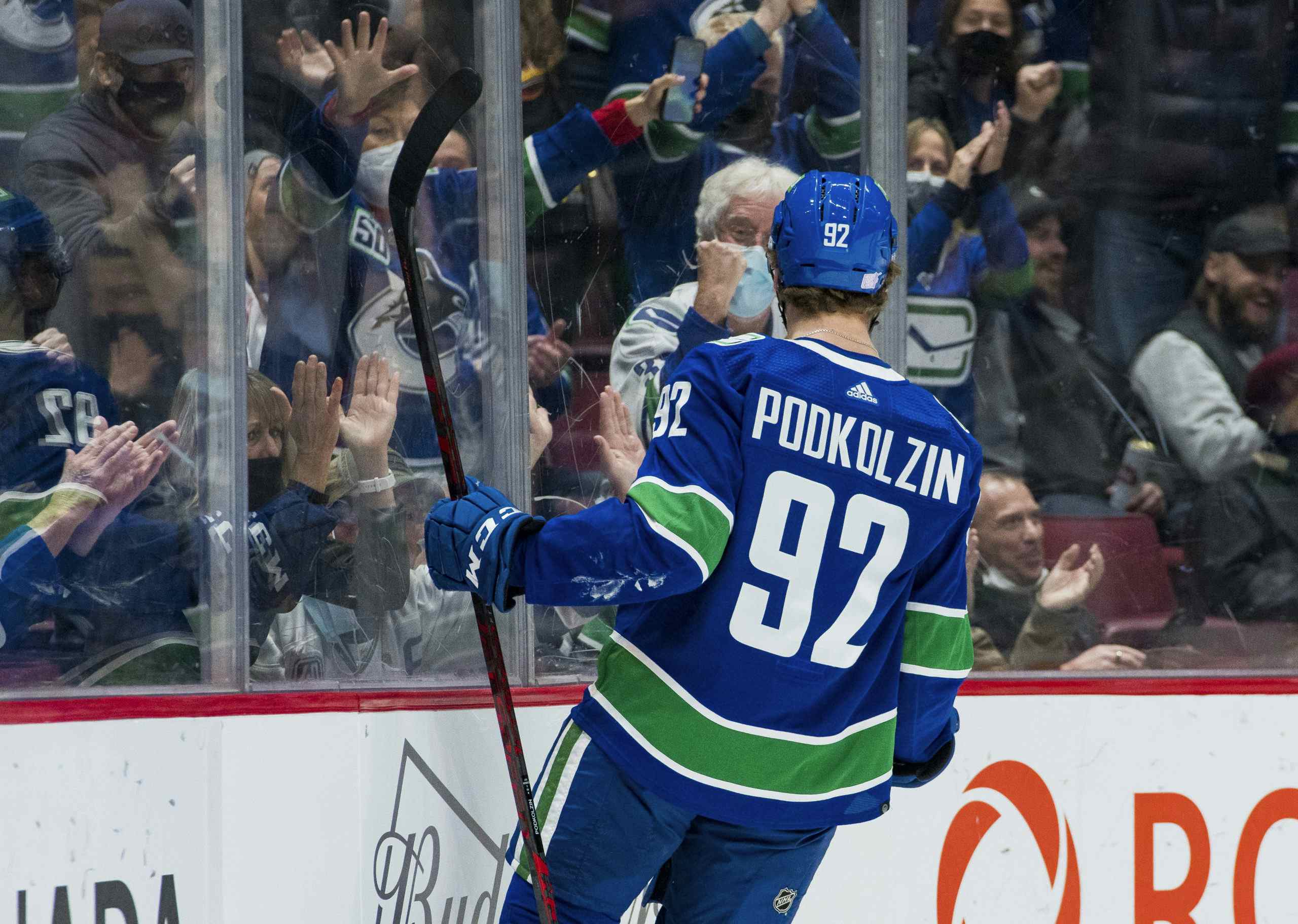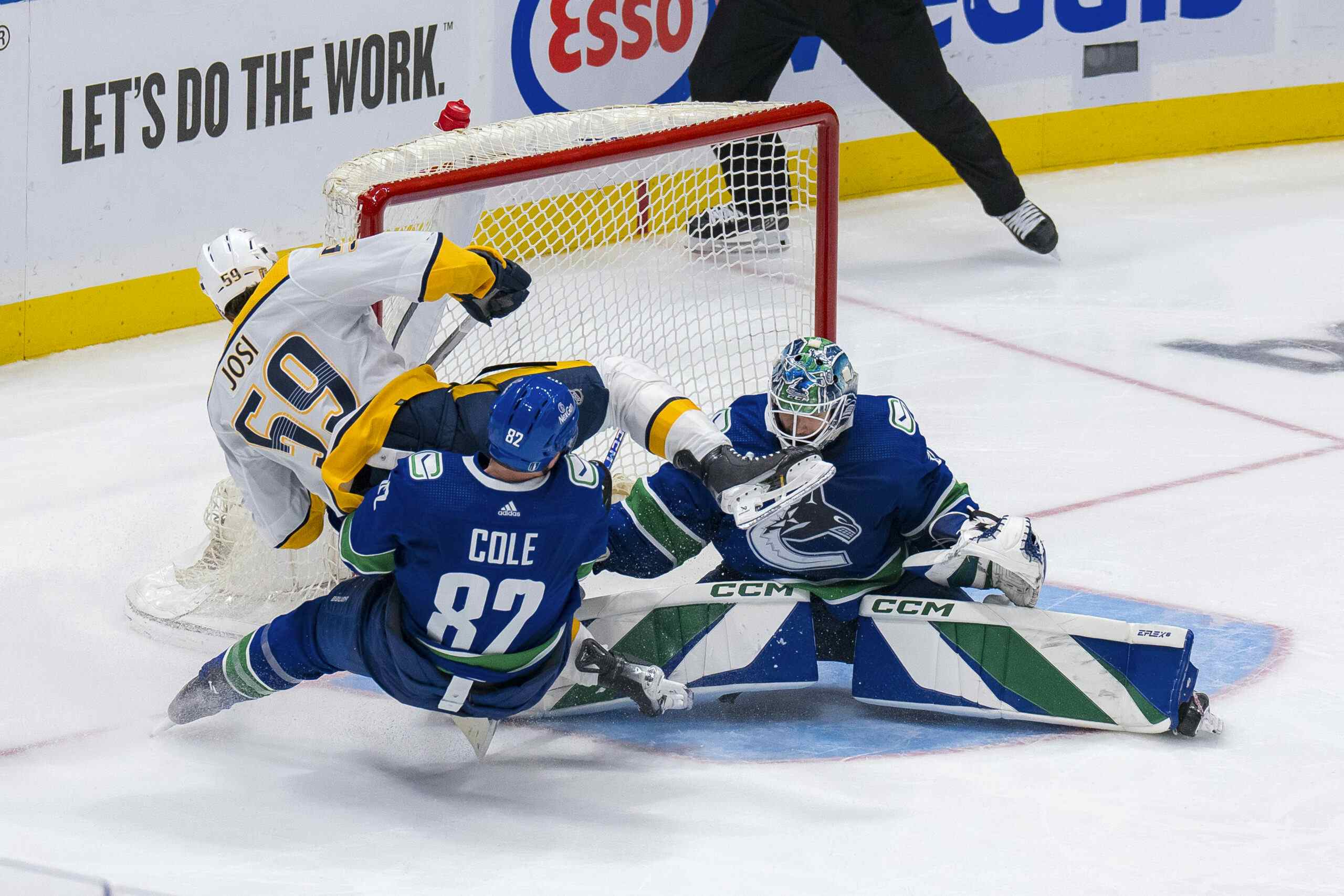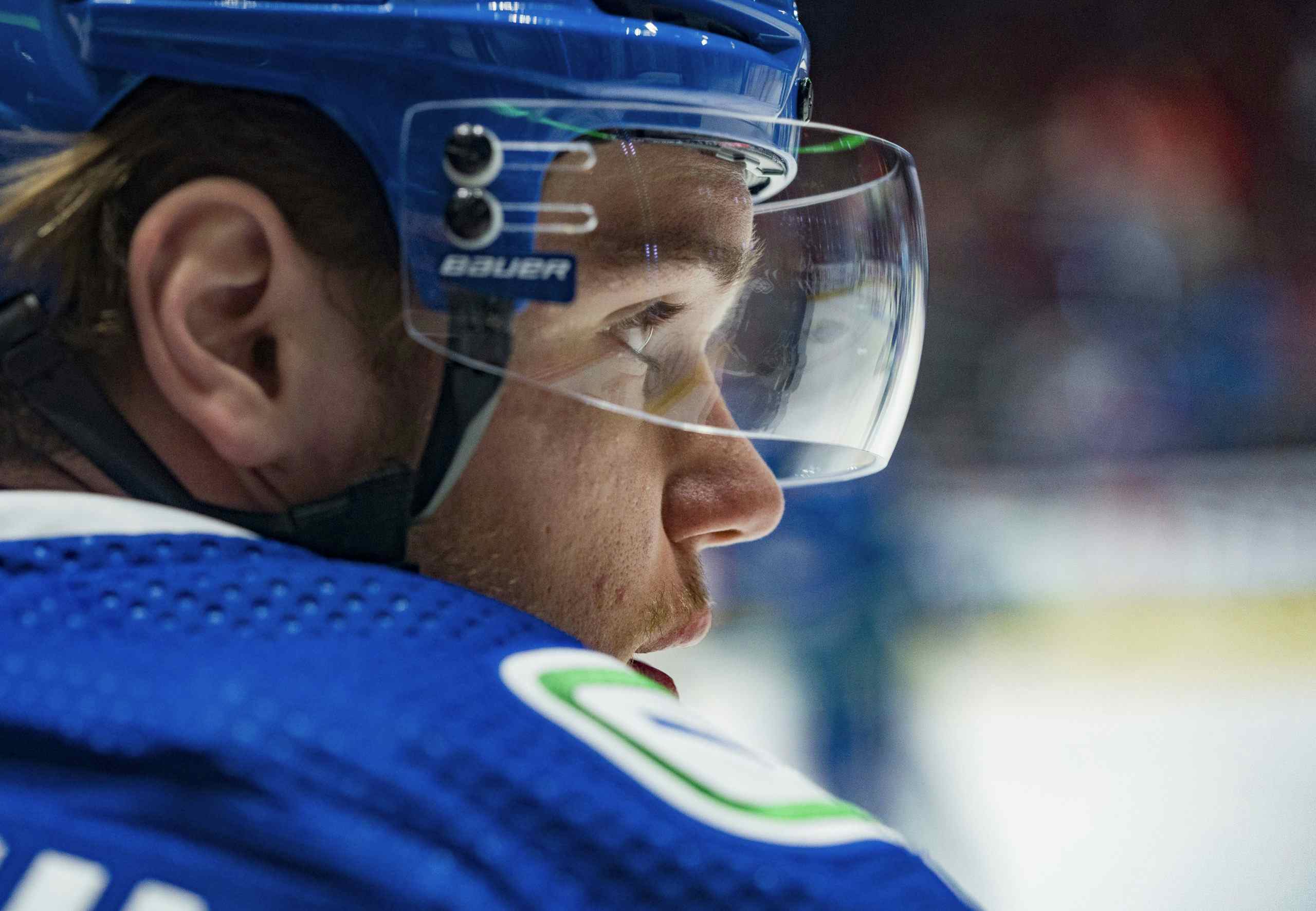Big Changes Coming? Five Core Canucks Who Could Be Traded
By Jeff Angus
10 years ago
Last weekend, I shared some thoughts on the five most valuable Canucks. The list was met with some criticism (mostly – why did I even make it?), as many wondered the point to rank players that will likely never get traded.
First off – if Wayne Gretzky can get traded (sold), than any player can be moved. Who saw Philadelphia moving Jeff Carter and Mike Richards a few summers ago?
Anyway, today’s list looks at the five most valuable and tradable assets in the organization. Could the Canucks conceivably trade the Sedins? Sure, it could happen. But the odds of such a trade are very, very, very low.
Alex Burrows ($4.5 million per season, signed through 2016-17)
Why?
Burrows is a really, really good hockey player. He is the most universally liked Canuck among team fans. He scores goals, is one of the best defensive wingers in hockey, and has tremendous hockey IQ. He can play on the top line in a scoring role, or on the third line in a shutdown role. He is the Western Conference version of Pascal Dupuis.
Because of all of those nice things, he would be able to fetch the Canucks a nice return. He is 32 years old, although he got a late start to his NHL career. The Canucks usually try to avoid to pay big money to forwards past the age of 35. Burrows will be 36 when his new contract expires.
Why not?
He’s a big game performer (cliché, sure). He has worked his butt off to get better each year. He has also worked really hard to change his game, although he gets absolutely no credit for that from the media outside of Vancouver.
Trading Burrows would only make sense if it brought back a young top six forward or a young top four defenseman. The problem is that Burrows is probably more valuable to the Canucks, than he would be on the trade market.
Oh, and give him a follow on Twitter @aburr14
Ryan Kesler ($5 million per season, signed through 2015-16)
Why?
Kesler has seen more scalpels than a typical 28-year-old. Consecutive offseason surgeries (hip and shoulder/wrist, respectively) have slowed him down considerably. He had a fantastic 35 minutes in Game 2 against the Sharks in the first round, but his conditioning was obviously an issue for the other 205 minutes of the series.
He has a very fair cap hit for what he brings to the table when healthy. When healthy, unfortunately, hasn’t been often enough for Vancouver over the past two years. They were a one line team in 2013, and Kesler may not be able to play his reckless style of hockey for many more years if he keeps breaking down.
Unlike Burrows, Kesler is deserving of his diving reputation. He isn’t as bad (or good) as the greats like Patrick Kaleta or Dustin Brown, but it is awfully hard to listen to Bieksa calling out opposing players for diving when Kesler is on his team. Like Brown, he is tarnishing his reputation a bit, which is unfortunate because both of them are phenomenal hockey players.
Why not?
He’s the most important player to the team. He’s the engine and the captain of the ship (two analogies is enough). When he is healthy and on his game, the Canucks are transformed into a very, very dangerous club. I have made the point before – you won’t find two more opposite centers than Sedin and Kesler (methodical, crafty, and cerebral compared to physical, aggressive, and tenacious), and that makes it awfully hard for opposing teams to game plan against them.
Again, moving Kesler makes little sense unless he fetches a younger center in return. Vancouver is thin up the middle even when he is healthy, and they are going to let Max Lapierre test free agency. Brendan Gaunce is going to be a good one, but he is a few years away yet.
Jordan Schroeder (RFA this summer)
Why?
Is he a top six talent? I’m not sure. His production at the AHL level doesn’t scream “offensive upside,” but he showed great instincts and hands during his time with the Canucks. I mean this in a good way, but Schroeder reminds me of a faster Kyle Wellwood. He can check, he can play in offensive situtations, and he won’t hurt you with bad penalties (or any penalties).
Schroeder could be dangled if the club wants to bring in a veteran center or defenseman (or another young guy at a different position).
Why not?
Vancouver doesn’t exactly have the deepest crop of prospects. Trading one of them away for a rental or short-term improvement may not be the right move to make at this point in time. And I think the team wants to see what they have in Schroeder before making a long term decision on him.
Alex Edler ($5 million per season, signed through 2018-19)
Why?
After years of waiting for the big breakout from 23, it is now time to accept that Edler is what he is – a big, mobile two-way defenseman with a ton of talent, but also a lot of inconsistency in his game. He’s a really good player, but not a 1A defender on a championship team. For $5 million, he should be more versatile than he is. He can’t play on the right side. He needs to have a certain type of partner to thrive (see: not Kevin Bieksa), and he is very predicable on the power play.
The Canucks gambled that they wouldn’t miss Christian Ehrhoff, and they lost.
The biggest reason for moving Edler, though, is because he is so good. There aren’t many 6-3, 225 pound defensemen who can skate like he can. We often forget this when he turns the puck over or loses his man in front of the net. He is physical when he wants to be, and he is one of the better offensive defensemen in hockey, too. At five million per year, he’s also great value.
MovingEdler for a good forward makes sense if the Canucks have plans to add another top four defenseman (or believe that Chris Tanev is ready for a promotion). It would allow the team to reunite Bieksa and Hamhuis, while moving Garrison back to his natural position as a left-side defenceman, where he could anchor the second pairing with Chris Tanev or a defenseman to be named later.
How does an Edler-for-Jeff Skinner swap sound, Canucks fans?
Unless you are getting great value in return, it usually isn’t wise to move defencemen with Edler’s pedigree for the sake of it.
Roberto Luongo ($5.33 per season, signed through the next 150 years)
Why?
Really?
Why not?
Really?
In all seriousness, there is only one reason to keep Luongo. He is a superior goaltender to Cory Schneider, but not by much. And there are countless reasons to trade him. His contract, the fact that the organizaton has "chosen" Schneider, and the fact that they owe it to Luongo to find him a place to start next season, to name three. The goaltending market this summer is going to be very interesting. In addition to Luongo, the likes of Ryan Miller, MA Fleury, Ilya Bryzgalov, Jaroslav Halak, Ryan Miller, and Niklas Backstrom could all be on the move.
His contract is long, but I still don’t think it is as bad as some in the media leads us to believe. He is a vastly superior goaltender to all of the ones I just listed off, too. The Canucks will have to eat some of the cap punishments when he retires early, but for $5.33 million per season you aren’t going to get a better goaltender.
Previous Posts from Jeff (@anguscertified)
- Top 5 Trade Values on the Canucks
Recent articles from Jeff Angus





